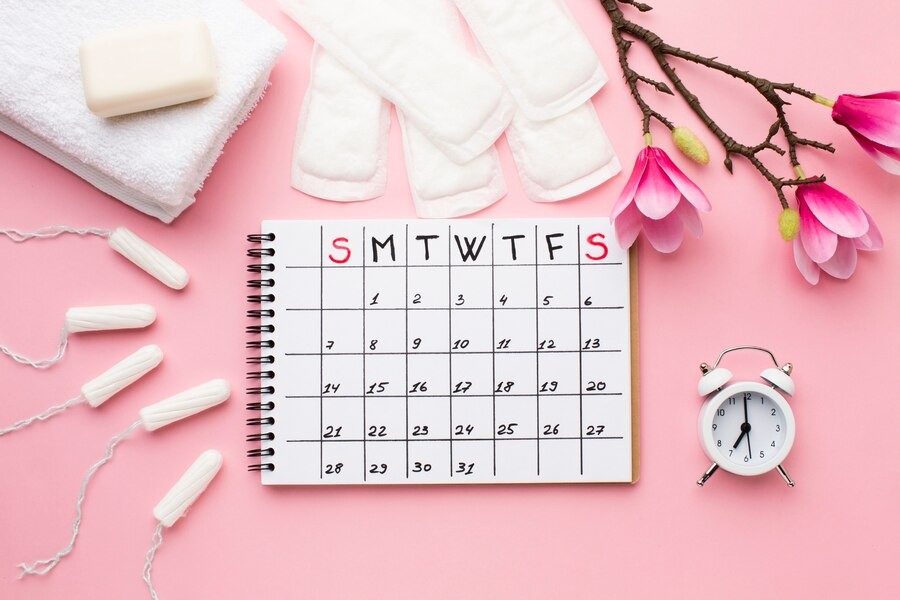Ovulation, the process of releasing a mature egg from the ovary, typically happens once in each menstrual cycle and is essential for fertility.
However, in some cases, ovulation may not occur, a condition called anovulation. This issue can lead to fertility problems and disrupt the regularity of menstrual cycles.
Signs of Anovulation
Anovulation may result from several factors, including hormonal imbalances, polycystic ovary syndrome (PCOS), stress, rapid weight changes, thyroid disorders, sexually transmitted infections, or the use of hormonal contraceptives.
Common signs that ovulation might not be occurring include:
Irregular Menstrual Cycles
An irregular menstrual cycle is one of the main signs of anovulation. While the typical cycle ranges between 21-35 days, significantly shorter, longer, or irregular cycles can signal a lack of ovulation.
Light or Heavy Menstrual Flow
Changes in menstrual flow can indicate anovulation. When ovulation doesn’t occur, the uterine lining might not develop normally, which can lead to either lighter or heavier periods.
No Increase in Basal Body Temperature
During ovulation, basal body temperature generally rises by about 0.5º Celsius due to the release of progesterone.
If ovulation does not take place, basal body temperature will remain steady without any noticeable increase.
Minimal or No Change in Cervical Mucus
Leading up to ovulation, cervical mucus typically becomes more abundant, clear, and elastic, resembling egg whites. This consistency helps sperm travel toward the egg. However, if cervical mucus remains thick or does not change throughout the cycle, ovulation may not be occurring.
Consistently Negative Ovulation Tests
Ovulation tests detect the luteinizing hormone (LH) in urine. If these tests repeatedly show negative results, it could mean that ovulation has not happened.
Absence of Ovulation Pain
Some women experience mild discomfort in the lower abdomen during ovulation. If you usually experience this symptom but suddenly don’t, it may indicate that ovulation is not occurring.
What to Do If Ovulation Doesn’t Occur
Keeping track of your menstrual cycle is very helpful. You can record it on a calendar or use a tracking app on your phone.
If you notice irregularities in your cycle, consult a doctor. Your doctor may recommend tests, such as hormone evaluations, ultrasounds, or other assessments.
A healthy lifestyle also plays a key role in supporting fertility and ovulation. Maintaining a healthy weight, exercising regularly, managing stress, and following a balanced diet can help support regular ovulation. For additional guidance, you can consult a doctor through the Ai Care app by downloading it from the App Store or Play Store.
Curious about other health topics? Click here
- dr Hanifa Rahma
WebMD (2023). What Is Anovulation?. Available from: https://www.webmd.com/infertility-and-reproduction/what-is-anovulation
Better Health Channel. Ovulation and fertility. Available from: https://www.betterhealth.vic.gov.au/health/conditionsandtreatments/ovulation
Cleveland Clinic (2022). Ovulation. Available from: https://my.clevelandclinic.org/health/articles/23439-ovulation
Lisa Fields (2024). Ovulation Symptoms. Available from: https://www.webmd.com/baby/am-i-ovulating
Cleveland Clinic (2024). Anovulation. Available from: https://my.clevelandclinic.org/health/diseases/21698-anovulation
Cleveland Clinic (2022). Menstrual Cycle. Available from: https://my.clevelandclinic.org/health/articles/10132-menstrual-cycle
Mayo Clinic (2023). Basal body temperature for natural family planning. Available from: https://www.mayoclinic.org/tests-procedures/basal-body-temperature/about/pac-20393026
Planned Parenthood. What's the cervical mucus method of FAMs?. Available from: https://www.plannedparenthood.org/learn/birth-control/fertility-awareness/whats-cervical-mucus-method-fams
WebMD (2024). How to Use an Ovulation Test. Available from: https://www.webmd.com/baby/how-to-use-an-ovulation-test












